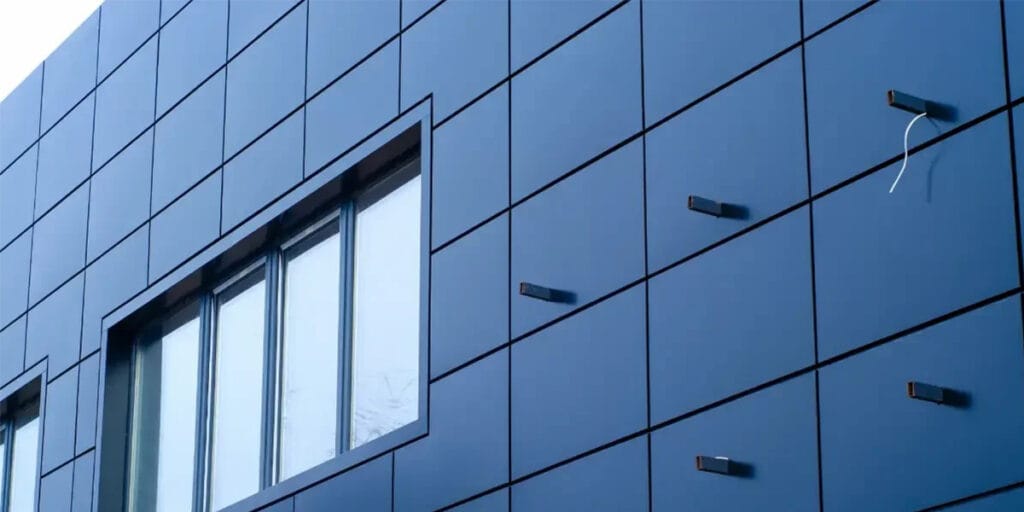ACM Aluminum Composite Panel Advantages and Applications in Construction
ACM aluminum composite panels are engineered materials made by bonding two thin aluminum sheets to a core, usually polyethylene or fire-resistant material. This construction gives them a balance of lightweight strength, rigidity, and weather resistance, making them a popular choice for exterior cladding, signage, and interior architectural designs.
They offer versatility in design with a wide range of finishes and colors, allowing for sleek, modern aesthetics while maintaining durability and ease of installation. Their ability to resist weather and fire makes them suitable for both residential and commercial applications.
The panel’s unique combination of structural strength and customization options addresses many challenges faced in construction and design. This blend of performance and appearance explains why ACM panels are increasingly selected for modern building projects.
What Is ACM Aluminum Composite Panel?
ACM aluminum composite panel consists of multiple layers combined to offer strength, durability, and aesthetic flexibility. They are engineered for use in various architectural and signage applications where lightweight and weather resistance are critical.
Core Materials and Composition
An ACM panel is made of two thin aluminum sheets bonded on either side of a core material. This core may be polyethylene (PE) or a fire-retardant (FR) mineral core, chosen based on the required safety standards and performance needs.
The aluminum layers provide corrosion resistance and a sleek surface, while the core adds rigidity and impact strength. The bonding process ensures the layers function as a single panel with good dimensional stability.
This composite structure allows for a balance of weight and durability, making ACM panels ideal for both exterior cladding and interior design.
Standard Sizes and Thicknesses
ACM panels generally come in standard sheet sizes measuring 4 feet by 8 feet (1.22m by 2.44m) or larger, depending on manufacturer capabilities. Custom sizes are often available for specialized projects.
Thicknesses typically range from 3mm to 6mm, with the aluminum layers about 0.3mm to 0.5mm thick on each side. The core thickness varies accordingly.
This variety allows designers and builders to select panels that best fit structural requirements without adding unnecessary weight or bulk.
Key Properties and Benefits
ACM panels offer excellent strength-to-weight ratio, making them lightweight yet structurally sound. They have high resistance to weather, corrosion, and UV exposure, which helps maintain appearance over time.
Other key benefits include:
- Fire resistance, particularly those with mineral cores
- Ease of fabrication like cutting, drilling, and bending
- Smooth surface suitable for painting or printing
- Low maintenance compared to traditional materials
These features contribute to ACM’s popularity in modern architecture, signage, and interior decoration.
Applications and Installation of ACM Panels
ACM panels are versatile materials used in various environments due to their durability, lightweight nature, and aesthetic flexibility. They require precise installation techniques to maintain their performance and appearance over time.
Architectural Facades and Cladding
ACM panels are widely used for exterior building facades thanks to their weather resistance and modern look. They provide a protective layer against environmental elements and are often installed as part of a rainscreen system with a weather-resistant barrier behind them.
Installation involves attaching the panels to a structural substrate, which can be metal, wood, or concrete. They are cut to size and fastened with mechanical fasteners or adhesive systems. Proper ventilation behind the panels prevents moisture buildup, extending the lifespan of the cladding.
Signage and Display Solutions
The lightweight strength and smooth surface of ACM panels make them ideal for signage and displays. They allow for sharp graphics, vibrant colors, and clean finishes, enhancing brand visibility.
Installation for signage often requires custom cutting and routing to fit specific shapes and designs. Panels can be mounted on various frameworks or directly on walls, using screws, adhesives, or frames depending on the application. Their resistance to weather and impact ensures long-term durability for outdoor signage.
Interior Design Uses
Inside buildings, ACM panels contribute to modern aesthetics and functional design. They are used for wall coverings, ceiling panels, partitions, and decorative facades due to their fire-retardant cores and versatile finishes.
Installation indoors is straightforward, typically involving screws or adhesives on drywall, metal studs, or other substrates. Panels are easy to cut and shape to fit spaces precisely. They improve interior durability while maintaining visual appeal in commercial and residential spaces.
Keep an eye for more latest news & updates on Ucatruco!






